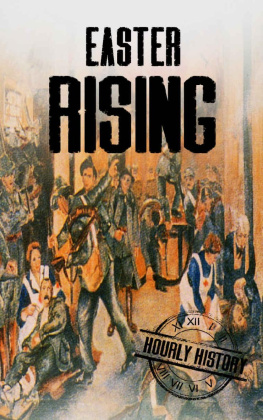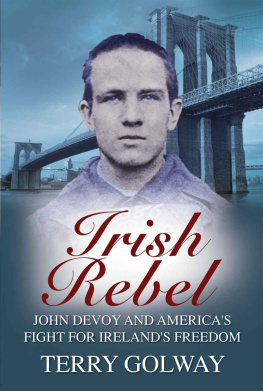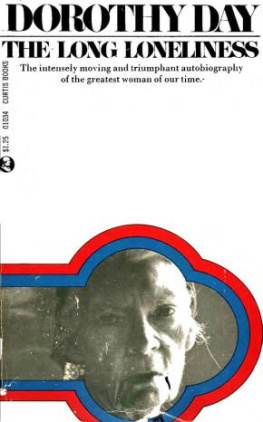First published in 2014
8 Chapel Lane,
Sallins,
Co. Kildare,
Ireland
This edition 2014 Anne Mac Lellan
www.iap.ie
British Library Cataloguing in Publication Data
An entry can be found on request
ISBN 978 0 7165 3237 8 (paper)
ISBN 978 0 7165 3236 1 (cloth)
ISBN 978 0 7165 3240 8 (PDF)
ISBN 978 0 7165 3250 7 (Epub)
ISBN 978 0 7165 3251 4 (Mobi)
Library of Congress Cataloging-in-Publication Data
An entry can be found on request
All rights reserved. Without limiting the rights under copyright reserved alone, no part of this publication may be reproduced, stored in or introduced into a retrieval system, or transmitted, in any form or by any means (electronic, mechanical, photocopying, recording or otherwise), without the prior written permission of both the copyright owner and the above publisher of this book.
Printed in Ireland by SPRINT-print Ltd
A CKNOWLEDGEMENTS
In writing this biography, I have accumulated many debts. In particular, I would like to thank Dr Clara Cullen for reading drafts of this book and making many useful suggestions. Claras work on Dorothys cousin, Elsie Henry, has been an anchor as I tried to navigate my way through the various Stopford relations (and there were many of them!). Her elegant editing of Elsies diaries, published as The World Upturning: Elsie Henrys Wartime Diaries, 1913-1919 has been an inspiration.
Dorothys great-niece, Sandra Lefroy, has patiently and generously answered many questions, welcomed me into her home, provided samples of Dorothys handwriting and photographs and, along with her sister Penny, read drafts of the book.
Alice Mauger has read and commented on drafts of this book (and its endnotes!) with her customary meticulous precision. For her keen eye and her constant support, I say a heartfelt thanks. I am very grateful to Greta Jones, Emerita Professor of Social and Intellectual History at the University of Ulster for reading this biography and writing the foreword.
Thanks to Dr Ida Milne for supplying a copy of the group photograph from which the image of Dorothy Stopford Price featured on the front cover was extracted. Her grand-uncle Dr Willie Elmes, a surgeon, is pictured in the original photograph which was taken in Meath Street Hospital, Dublin, in 1920.
I owe an enormous debt of gratitude to the Centre for the History of Medicine in Ireland in University College Dublins School of History and Archives. I would especially like to thank Dr Catherine Cox, Dr Lindsey Earner-Byrne and Dr Susannah Riordan for their help and support over the years. I would like to take this opportunity to thank the Wellcome Trust for funding some of the research which underpins this book. In UCDs School of Medicine and Medical Sciences, Conor Ward, Professor Emeritus of Paediatrics and Brendan Kelly, Associate Clinical Professor of Psychiatry, were encouraging readers of drafts of this book.
My first introduction to the work of Dorothy Stopford Price was through an essay written by Dr Margaret hgartaigh about Dorothys work in the 1930s. Margarets enthusiasm for this project is gratefully acknowledged.
I would like to thank all my friends and colleagues who contributed to the Growing Pains: Childhood Illness in Ireland 1750-1950 collection and who have been so encouraging about this project Alice Mauger (my co-editor), Conor Ward, Gaye Ashford, Ian Miller, Ida Milne, Jean Walker, June Cooper, Phil Gorey, Laura Kelly and Susan Kelly.
Other friends and family have persevered with reading drafts thanks to Joan, Sinead, Pat, Peter, Peggy and Fiona.
At Irish Academic Press, I would like to express my gratitude (once again!) to a wonderful team: Lisa Hyde, Conor Graham, Colin Eustace and their hardworking copy editor.
This book could not have been written without the expert assistance of numerous archivists and librarians: I am most grateful to the staff of the Bodleian Library in Oxford, Dublin Diocesan Archives, Irish Military Archives, Irish Red Cross, National Library of Ireland, National Archives of Ireland, Royal College of Physicians of Ireland Heritage Centre, Royal College of Surgeons in Ireland, Trinity College Dublin Manuscripts Room, University College Dublin Library and the Wellcome Trust Archives, London.
I must also acknowledge my debt to four books in particular: Protestant Nationalists in Revolutionary Ireland: The Stopford Connection by Leon Broin; Dorothy Price. An Account of Twenty Years Fight against Tuberculosis in Ireland by Liam Price; The Price Notebooks edited by Christiaan Corlett and Mairead Weaver and Kathleen Lynn: Irishwoman, Patriot, Doctor by Margaret hgartaigh. Thanks to Gillian Leonard who generously gave me a precious copy of Liams book.
A big thank you to all those named and unnamed who helped me research Dorothys life and work.
Anne Mac Lellan, February 2014
F OREWORD
By Emerita Professor Greta Jones, Professor of Social & Intellectual History, University of Ulster
This is the first full-length study of an important figure in the history of twentieth century Irish social and medical history. Dorothy Stopford Price was distinguished in many ways. A Protestant who became a fervent Irish nationalist and who took part in the struggles for Irish independence in the 1920s at the same time, she was a leading figure in the Irish medical community. She was one of the first generation of Irish women who made names for themselves in medicine. She became a key figure in the development of paediatrics in Ireland working in St Ultans Childrens Hospital. She was also an important contributor to the debate on the eradication of tuberculosis and is to be credited with being the key figure in promoting the use of BCG in the 1940s and 1950s, a measure for which she was , for a long time, the leading advocate in Ireland.
Her path was not always smooth. She came up against the pressures to expand Catholic influence in Irish medicine after independence and, because of that, and because there were limits to the advance of women in medicine in twentieth-century Ireland, Price experienced frustration in achieving her objectives. Nonetheless, she significantly changed the landscape of Irish medicine and public health.
Price can therefore be looked upon from many perspectives; as a first- wave feminist for whom networks of female friends and colleagues were crucial; as an innovative and combative controversialist in medicine whose interventions, though not always welcome, were significant; and as a patriot of the newly-independent state of Ireland who honestly and doggedly tried to improve social conditions.







